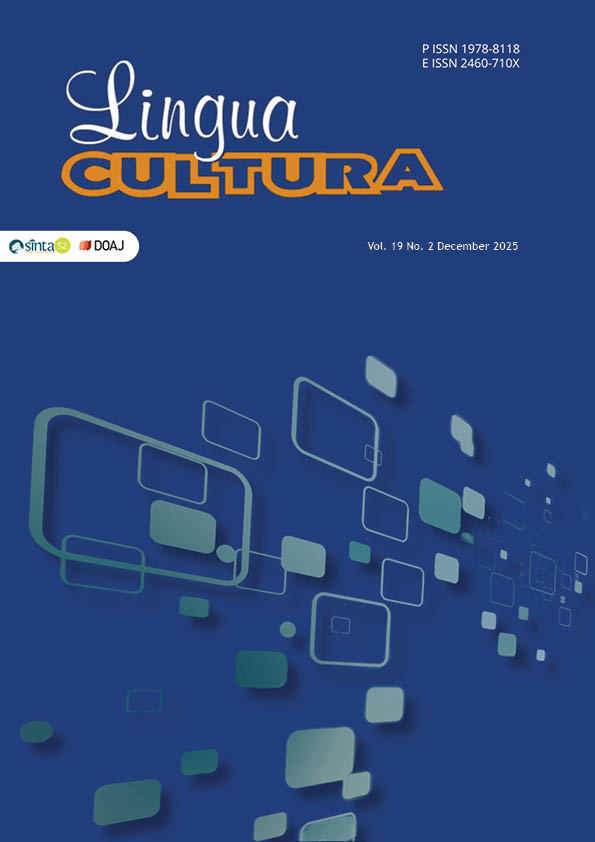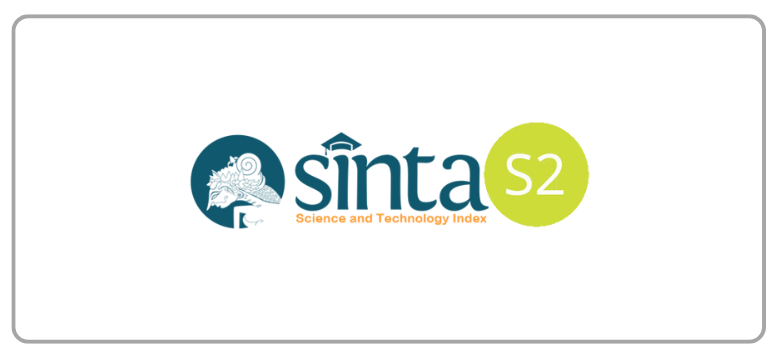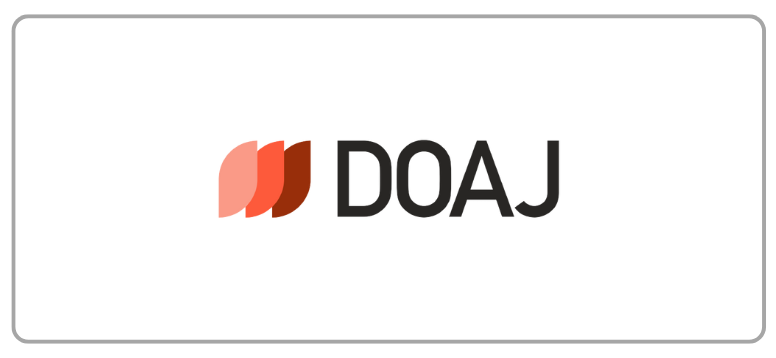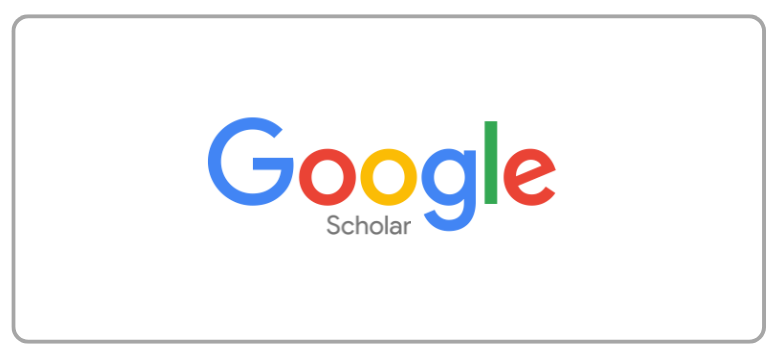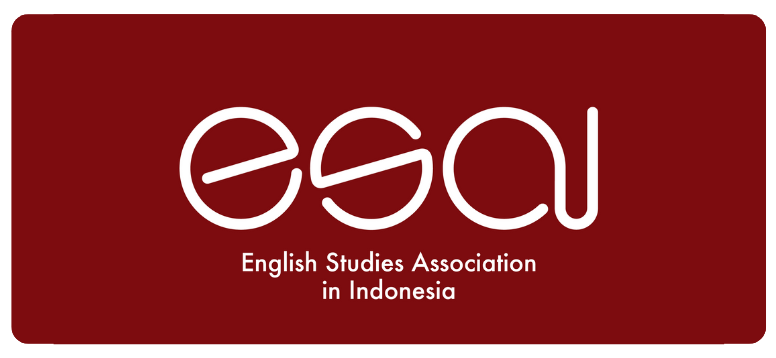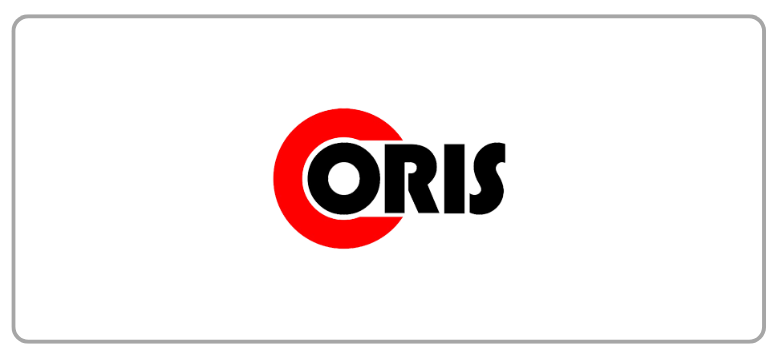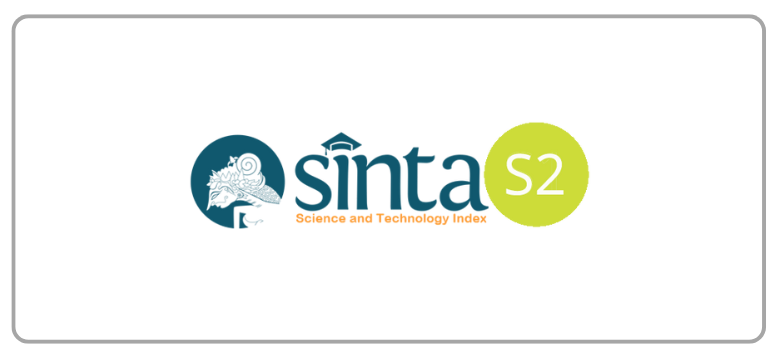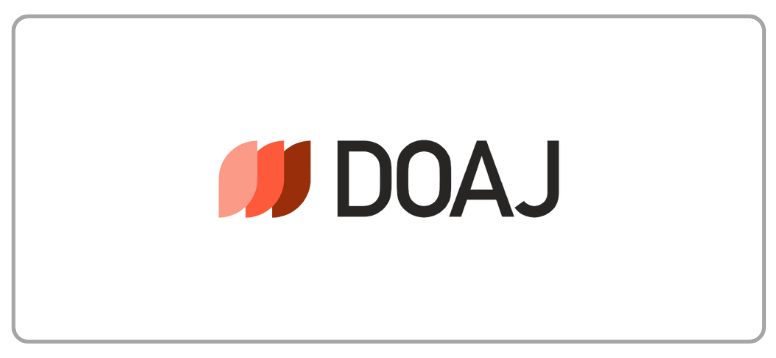Analysis of the Discourse Text of Tropicana Slim Sweetener Product Advertisement Based on Guy Cook's Theory
Keywords:
discourse analysis, advertising discourse, tropicana slim, persuasion, textual analysisAbstract
This research aims to describe and map the use of textual elements in the advertising discourse of Tropicana Slim sweetener products. The theory of approach used in this research is Guy Cook's advertising discourse analysis theory which focuses on the form of text. The data in this study are in the form of words, phrases, sentences, speech, jingles, and soundtracks in advertising discourse contained in Tropicana Slim Sweetener advertisements. The data sources used in this study are 5 Tropicana Slim Sweetener advertising videos in 2020, 2021, 2022, 2023, and 2024, accessed through the official Tropicana Slim YouTube channel. This research is qualitative. Data were obtained using the observation method followed by note-taking and documentation techniques. Data analysis was conducted using agih and padan methods (methods of linguistic analysis that involve distributional and comparative approaches). In addition, Guy Cook's advertising discourse analysis theory was also used to analyze the data. These findings indicate that Tropicana Slim's advertisements from 2020 to 2024 utilize various linguistic forms that are deliberately chosen to reinforce their persuasive message. The use of denotation, connotation, and metaphor serves to construct literal and figurative meanings that emphasize a healthy, natural, and modern image. Various forms of parallelism lexical, grammatical, semantic, discursive, phonological, and even graphological create repetitive patterns that make it easier for the audience to remember the ad's message and give the brand a consistent impression. Repetition and substitution reinforce the core message while avoiding reader fatigue, while referring expressions help direct the audience's focus on the main product. Meanwhile, the use of conjunctions unites promotional ideas into a coherent and easy-to-follow message flow. This overall strategy demonstrates that Tropicana Slim consistently combines carefully planned linguistic elements to shape the product's image as a healthy choice while strengthening the ad's appeal to consumers.
References
Afriyanti, A. T., Kurniawan, P. Y., & Nisa, H. U. (2022). Analisis tindak tutur lokusi, ilokusi, dan perlokusi dalam wacana iklan produk kecantikan di Instagram anesih. Jurnal Ilmiah Wahana Pendidikan, 8(18), 524–539.
Ardiansyah, M. A., & Syukri, H. (2023). Analisis wacana iklan Guy Cook pada produk makanan mi instan Indomie. Nuansa Indonesia, 25(1), 70–83.
Asrita, S., & Rhizky, D. P. (2020). Wacana product placement Tropicana Slim dalam branded web series. Iptek-Kom, 22(1), 109–123.
Astari, D. E. (2022). Analisis Wacana Iklan pada E-Commerce Shopee. Universitas Sebelas Maret, Surakarta.
Bangun, C. Y. S. B. B., Marpaung, R. O., Samosir, S. S., Anggereni, T., & Lubis, M. (2024). Analisis wacana iklan Energen menggunakan teori analisis wacana kritis Van Dijk. Jurnal Intelek Dan Cendikiawan Nusantara, 1(3), 3785–3790.
Baryadi, P. (2002). Dasar-dasar analisis wacana dalam ilmu bahasa. Yogyakarta: Pustaka Gondho Suli.
Belch, G. E., & Belch, M. A. (2003). Advertising and promotion: An integrated marketing communication perspective (6th Edition). Megraw Hill.
Cook, G. (1989). Discourse. Oxford University Press.
Cook, G. (2001). The Discourse of Advertising. New York: Routledge.
Dea Mita, Andi Karman, & Akhiruddin, A. (2024). Analisis Wacana Kritis Teun A. Van Dijk pada Iklan YouTube Bear Brand Tahun 2023. Jurnal Onoma: Pendidikan, Bahasa, Dan Sastra, 10(1), 590–598. doi:10.30605/onoma.v10i1.3324
Dewi, A. P., Fauziyah Rohmah, S. H., & Putri, D. M. (2024). Struktur Dan Fungsi Bahasa Dalam Wacana Iklan Kecantikan Berbahasa Rusia Di Media Sosial Youtube. Journal of Linguistic Phenomena, 2(2), 49. https://doi.org/10.30605/onoma.v10i1.3324
Eko Rusminto, N. (2020). Analisis Wacana: Kajian Teoretis dan Praktis Edisi 2. Yogyakarta: Graha Ilmu.
Herawati, Y. E. (2025). Analisis Struktur Wacana Iklan Kosmetik Produk Skincare Wajah Di Youtube. Jurnal Tahsinia, 6(3), 391–399.
Kasali, R. (1992). Manajemen Periklanan Konsep dan Aplikasinya di Indonesia. Jakarta: Pustaka Utama Grafiti.
Liliweri, A. (1992). Dasar-Dasar Komunikasi Periklanan. Citra Aditya Bakti.
Marzuki, I., Jannah, R., & Witdianti, Y. (2023). Analisis Wacana Iklan Skincare Lacoco Di Media Sosial Facebook. FRASA: Jurnal Keilmuan, Bahasa, Sastra, Dan Pengajarannya, 4(2), 23–31. https://doi.org/10.36232/jurnalbahasaindonesia.v4i2.3836
Mulyana. (2005). Kajian Wacana: Teori, Metode, dan Aplikasi Prinsip-Prinsip Analisis Wacana. Yogyakarta: Penerbit Tiara Wacana.
Nabila Br Surbakti, Afif Arahman, Erra Fazira MT, & Fatma Nabila. (2025). Analisis Wacana Iklan Le Minerale pada Media Internet. Jejak Digital: Jurnal Ilmiah Multidisiplin, 1(4), 683–690. https://doi.org/10.63822/fwzm8a36
Natashia, D. (2015). Wacana Iklan Parodi Jepang Fanta Gakuen Sensei Series. Lingua Cultura, 9(1), 13–20. https://doi.org/10.21512/lc.v9i1.756
Purba, C. G., & Damanik, I. R. (2024). Analisis Wacana Iklan Pada E-Commerce Shopee Big 6 . 6 Great Mid-Year Sale, 2(2), 100–105. https://doi.org/10.55606/jubima.v2i2.3065
Rahmawati, A., Anggriana, F., Pratiwi, I. K., & Izzati, Z. T. (2025). Analisis Wacana Iklan Shampo Head & Shoulders Menggunakan Teori Analisis Wacana Kritis Van Dick. Jurnal Penelitian Ilmiah Multidisipliner Vol., 01(04), 806–815.
Rinjani, A. Q., Ekawati, M., & Pradita, L. E. (2024). Analisis Wacana Iklan Air Minum Dalam Kemasan (AMDK) pada kanal YouTube SehatAQUA dan Le Minerale: Telaah Struktur dan Fungsi Bahasa. Skripta, 10(1), 1–11. https://doi.org/10.31316/skripta.v10i1.5966
Risa, F. A., & Anwar, M. (2021). Analisis Wacana Kritis Model Teun A. Van Dijk Pada Iklan Ramayana Department Store (A Critical Discourse Analysis on Ramayana Department Store Advertisement: Teun A. van Dijk’s Model). Suar Betang, 16(2), 159–167.
Rizqin Nikmatullah, M., & Ekawati, M. (2024). Wacana Pesan Singkat Iklan Judi Online. Mabasan, 18(1), 187–206. https://doi.org/10.62107/mab.v18i1.882
Rosmiati, A., Laksani, H., & Muslihah, I. (2025). Analisis Struktur Wacana Iklan pada Infografik Jenis Layanan Masyarakat Tentang Pencegahan Virus Corona, 6(1), 1–12. https://doi.org/10.33153/citrawira.v6i1.6068
Salsabila, A. (2022). Wacana Iklan Komersial Produk Rokok Gudang Garam Signature. Universitas Sebelas Maret, Surakarta.
Samsuri. (1988). Analisis Wacana. IKIP Malang.
Sari, Y., & Samaya, D. (2021). ANALISIS WACANA PERSUASIF IKLAN PRODUK KECANTIKAN PADA MEDIA ONLINE TRIBUN SUMSEL DAN IMPLIKASINYA TERHADAP PEMBELAJARAN BAHASA INDONESIA. Jurnal Didactique Bahasa Indonesia, 2(2), 59. http://dx.doi.org/10.52333%2Fdidactique.v2i2.873
Septriana, H., Hudhana, W. D., & Sumarlam, S. (2022). Analisis Wacana Kritis Iklan Layanan Masyarakat Covid-19 Pada Koran Media Indonesia (Kajian Teun a. Van Dijk). Lingua Rima: Jurnal Pendidikan Bahasa Dan Sastra Indonesia, 11(2), 117. http://dx.doi.org/10.31000/lgrm.v11i2.6633
Sudaryanto. (2015). Metode dan Aneka Teknik Analisis Bahasa. Yogyakarta: Sanata Darma University Press.
Tjiptono, F. (2008). Strategi Pemasaran. CV Andi Offset.
Yohana, A., Tobing, L., Sitanggang, A. R., Veronika, D., Destiana, F., Pakpahan, M., … Indonesia, N. (2025). Analisis Wacana Iklan Susu Frisian Flag : Pendekatan Teun A . Van Dijk dalam Menggali Makna Tersembunyi, 1(4), 634–640.
Published
How to Cite
Issue
Section
License
Copyright (c) 2025 Ravi Widiantoro, Hanifullah Syukri

This work is licensed under a Creative Commons Attribution-ShareAlike 4.0 International License.
Authors who publish with this journal agree to the following terms:
a. Authors retain copyright and grant the journal right of first publication with the work simultaneously licensed under a Creative Commons Attribution License - Share Alike that allows others to share the work with an acknowledgment of the work's authorship and initial publication in this journal.
b. Authors are able to enter into separate, additional contractual arrangements for the non-exclusive distribution of the journal's published version of the work (e.g., post it to an institutional repository or publish it in a book), with an acknowledgment of its initial publication in this journal.
c. Authors are permitted and encouraged to post their work online (e.g., in institutional repositories or on their website) prior to and during the submission process, as it can lead to productive exchanges, as well as earlier and greater citation of published work.
USER RIGHTS
All articles published Open Access will be immediately and permanently free for everyone to read and download. We are continuously working with our author communities to select the best choice of license options, currently being defined for this journal as follows: Creative Commons Attribution-Share Alike (CC BY-SA)
